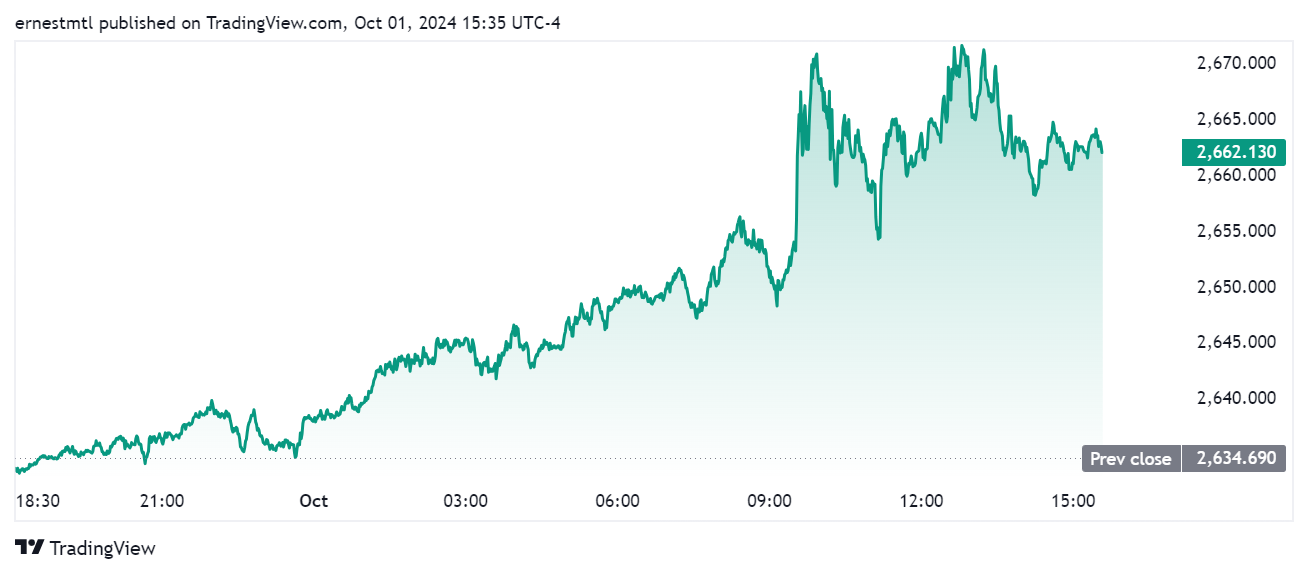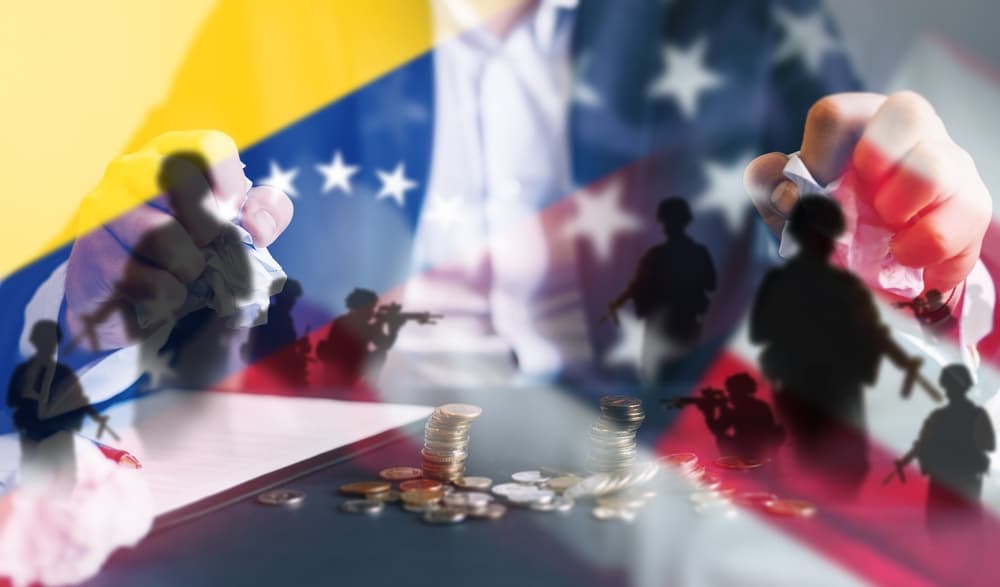
Gold and Silver's Path: Geopolitical Tensions Can't Match the Power of Rates
Middle East escalation may cause ‘knee-jerk reactions’ but gold and silver rallies will be driven by macro and rates – UBS’ Teves
In an interview with Bloomberg Television on Tuesday morning before Iran’s missile attack on Israel, Teves was asked why gold hadn't moved much given the significant recent escalation in the Middle East.
“The impact of geopolitical uncertainty and risk on gold prices is not exactly straightforward,” she said. “Ultimately, the way we look at it is that it adds to the list of reasons why investors would want to hold gold as part of their portfolio to diversify and as a hedge against these types of uncertainties, but the immediate price reaction is not really straightforward.”
Teves said that what really matters for gold are interest rates and macroeconomic factors. “The way we look at gold is it's real rates that matter, macro factors are ultimately what drives gold,” she said. “There is potential for knee-jerk reactions when headlines come out, but ultimately the more sustainable impact on the gold price is really the interest that investors would want to have gold as part of their portfolio.”
Asked about the impact of the upcoming U.S. election on the gold price to date, Teves said there’s no obvious play.
“I think for now, because there are so many moving parts in terms of what the election’s outcome might mean for gold prices, I don't think there's a lot of positions specifically ahead of the U.S. election,” she said. “The way investors look at it is that it's more about the U.S. fiscal position and what the outcome would mean for that. The expectation that the U.S. fiscal deficit is going to deteriorate regardless almost of who wins the election is seen to be positive for gold over the medium to long term.”
Teves was also pressed on the rising long gold positions on the Comex, and whether this represents a near-term downside risk for gold prices. “There has been a pickup in positions in the short term, and I think that means that the market could see some consolidation for now,” she replied. “But actually, if you look back to historical data, we're still not at all-time highs, and broader market positioning, in our view, is still not stretched.”
“Part of our bullish outlook on gold is really that we think that investor positioning in gold is quite lean, and there's a lot of room for investors to build those allocations to gold,” she added.
Asked about whether UBS saw investors continuing to buy the dips, Teves said that she expects they will because many who waited on the sidelines are still looking for an entry.
“The desire to hold gold is really more from a diversification standpoint,” she said. “The ‘buy-the-dip’ mentality has basically been the theme for most of 2024: Gold moved very quickly at the beginning of the year, left a lot of investors behind, and they have been trying to catch up ever since, but the pullbacks in gold have been relatively shallow and brief, so that continues to be the case up until now. I think that's why we've seen sharp moves higher in gold this year.”
“From a broader perspective I think the macro backdrop is supportive for gold,” Teves added. “The fact that real rates are coming down, the Fed is in easing mode. From a fundamental standpoint, we think physical demand is also quite resilient, even at higher gold prices. The official sector continues to add to gold reserves, and positioning allows for more allocations to gold to be built up over time. I think that continues to be the case, and the risk here is that because the market hasn't been providing a lot of pullbacks, that people will have to continue chasing the move higher.”
Teves was also asked whether UBS sees investors increasing the percentage of their portfolios allocated to gold above the traditional 3% to 5%.
“What we track is gold net long positions on Comex and gold ETFs as a ratio to global funds’ AUM [assets under management], or U.S. funds’ AUM,” she said. “That has ticked higher, but we're still well below the levels we got to during the previous multi-year bull run that peaked in 2012, early 2013, and we're still lower than the levels that that ratio got to during the pandemic. That does give us a bit of comfort, in our view, that positioning is actually not overcrowded, even though gold has got a lot of attention this year and the market has rallied quite a lot.”
Teves was then asked for UBS’ view on the other precious metals.
"Silver, we think, has a good potential to outperform gold in this environment, where gold prices are rising and the Fed is easing policy," she replied. “Also, from a fundamental standpoint, we see the silver market to continue to be in deficit, so that does add a bit of support to silver prices as well.”
She said that for platinum and palladium, they believe the drivers are more fundamental than macro. “We do see deficits in the platinum market, for instance, where we think this will drive prices higher over the medium to long term, but this move will be quite gradual, in our view, because there's still a lot of inventories of platinum that the market needs to digest,” she said.
“As far as palladium is concerned, we think that it's not a clear directional trend,” Teves added. “We think the palladium price will trade within a broad range over the next few years. We see deficits in palladium as well over the next few years, but over the long run our expectation is that the market does move into a surplus because of competition from battery electric vehicles.”
Teves said that UBS’ year-end target price for silver is $36 per ounce, and they see it rallying to $40 in 2025.
Gold’s price action on Tuesday would appear to confirm Teves’ view that macroeconomics trumps geopolitics in precious metals markets. Spot gold saw a steady run-up in price during the overnight before topping out at $2,671.82 just before 10 am EDT, and pulled back following the release of JOLTS employment data and the ISM Manufacturing report.
Then, even as missiles were breaking up and falling over Tel Aviv and Jerusalem in the early afternoon, gold prices were unable to break above $2,673 per ounce, and remained $10 off of last week’s all-time high, which came in the wake of the Fed’s rate cut.

Spot gold last traded at $2,662.06 per ounce for a gain of 1.04% on the daily chart.
This article originally appeared on Kitco











